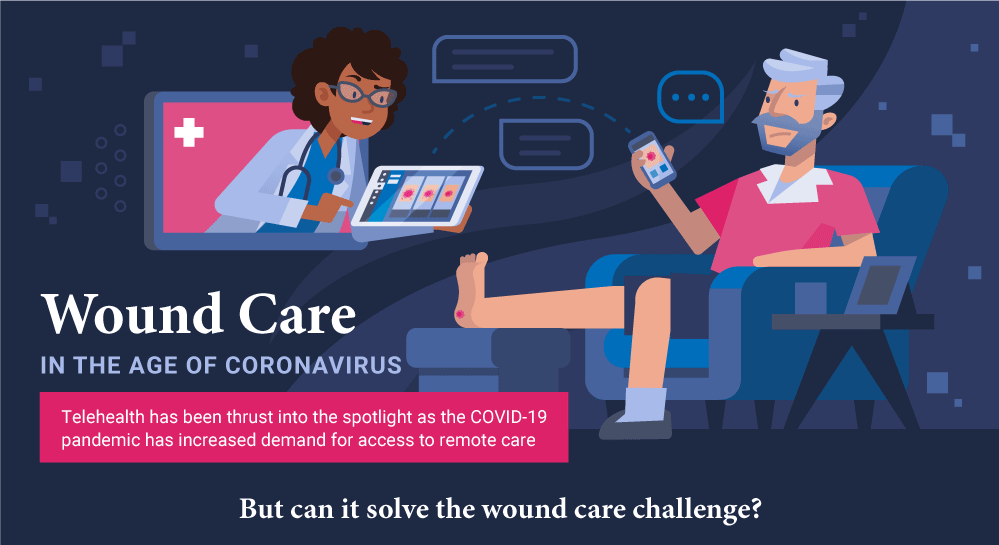With COVID-19 taking the world by storm, many wound care patients are left in the dust. Skilled nursing homes have started to ban visitors, including outside wound care specialists, to try to protect the vulnerable patients inside. Wound patients are canceling at-home appointments and are rejecting clinic visits due to fear of quarantine. Post-operative patients are now requiring different ways for wound monitoring that do not require going to the doctor. Wound care and the new challenges it now faces is affecting millions of people across the nation – 8.1 million Americans require some form of long term care. A huge percentage of which suffer wounds while in care, totalling some 2.5 million seniors that may require chronic wound care during the COVID-19 pandemic.
Wound care, on top of COVID-19, is expensive and complicated. Medicare estimates the cost of acute and chronic wound treatment can range anywhere from $28.1 billion and all the way up to an astounding $96.8 billion each year. Some of the operations include surgical wounds costing up to $13 billion and diabetic foot ulcers which can cost up to $6.9 billion. Per incident, per patient, wound care costs $3,000 to $4,000 and some can even reach all the way up to $10,000 for just one incident. Wound care is also extraordinarily complex as each patient requires specialized care. Without the careful eye of a specialist’s oversight, patients could lead to more serious complications, leading to wound infections, avoidable amputations, and even death. Combined with COVID-19 however, wound care becomes even harder to manage as every single patient, whether because of serious heart conditions, diabetes, chronic lung disease, and others, is especially vulnerable to the virus and can easily develop complications.
Learn more about how telehealth and wound care is now in the spotlight thanks to COVID-19 here.


